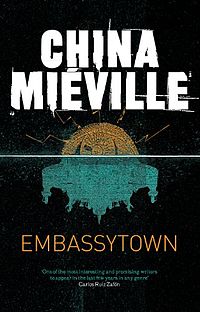The latest Coursera course I’ve completed is From the Big Bang to Dark Energy by Hitoshi Murayama of the University of Tokyo. It’s a physics course and the first non-computer science one I’ve taken since Introduction to Finance back when Coursera first started up. The main reason I took it, apart from the obvious one of firming up what was only a very loose understanding of some of the most important concepts in modern physics and cosmology, is that at four weeks long it’s fairly short. I am due to travel to Greece for nearly two weeks in October and I don’t want to make any serious commitments time-wise until that is over.
As its title implies, the course is a broad sweep of the history of the universe, covering how the universe began and likely scenarios on how the universe will end. This is very much a popular science course tailor made for Coursera rather than a real University of Tokyo physics course so the professor delights in framing the issues in terms of human interest. How and when was the Earth formed? What are humans and all other form of life on Earth made of? How does the Higgs boson relate to everyday life? And so forth.
Professor Murayama is remarkably eloquent and despite having a noticeable Japanese accent when speaking English, his articulation is perfect. Combined with his willingness to insert interesting anecdote at opportune moments, this makes the lectures engaging and relatively easy to understand. As usual, the lecture slides are provided as a separate download in PDF format (the file sizes are quite large!) and the videos themselves look professionally produced, so there’s no faulting the quality of the course materials.
The original course information page lists some calculus and high school physics as prerequisites. In reality the course seemed to operate on two distinct levels. There are two quizzes every week with one week being easier and focusing on pure theoretical understanding, while the second quiz is somewhat and required some mathematical calculation to complete. The harder quizzes look intimidating at first glance but are actually very approachable once you take the time to understand what they are trying to teach. It appears however from discussions on the forums that even this was too much and many students couldn’t complete the harder quizzes, prompting the course organizers to comment that future offerings of this course will likely make a explicit break between an easier, more mainstream version, and a harder one requiring more mathematical knowledge.
For my part, while I did eventually complete everything, I couldn’t have done it without checking the forums. One reason is that my mathematics were rusty. But the main thing is that the quizzes ask to think like a physicist and that’s something that I’ve never developed. Rather than asking you to memorize formulas and apply them, the questions frequently wanted you to figure out the relationships between the variables given from their units and shift the variables around until you get the units and therefore the answer you want. Apparently this is called dimensional analysis.
One small problem that I found annoying is that the quizzes explicitly asked you to search for essential pieces of information yourself on the Internet, for example, what is the mass of the Earth? What is the mass of Mount Everest? What is the energy of the w boson? Given that different sources may give slightly different values, this made the search aggravating. They should just have bitten the bullet and given the values themselves. Eventually they did add a glossary and included a ton of extra information but it would have been nice for the course list such useful information early on. People like me who haven’t studied physics in more than a decade need some reminding that a Joule is the same as 1 kg·m2/s2 and a Watt is a Joule / s. There were also some tricky problems with rounding the answers in just the right way and presenting the answers in the correct format with scientific format so that the grading script would parse them correctly.
Still the intent of the quizzes is clear and I really liked how they tried to encourage students to think more about the subject matter being taught. As I understand it, the quizzes were entirely done by the course’s TA, Brian Henning. He even made a series of videos himself to help students with the harder quizzes and explain the mindset behind them. Unfortunately while his enthusiasm is certainly laudable, I didn’t find those videos particularly useful.
I did learn a great deal from this course. It’s great to finally have some concrete understanding of what is really meant by terms like Higgs bosons and dark energy etc. I was also interested in the details of how the physicists actually do their experiments and the thought processes behind them. One subtext throughout the course is a plea for public support for big, and necessarily expensive, science projects. It may seem somewhat self-interested of the course organizers, but it’s a cause that I support so I’m all for it.
One thing that does worry me is how little concepts like dark matter and dark energy are really understood. Despite all the time the course spent on these topics, they really come down to saying that because of so-and-so gravitational effects and other observations, we can infer that something is there. But they’re called dark precisely because nothing else is known about them beyond this. For this reason, it’s seems odd to me to teach them as accepted science. It seems to me, it could be equally likely that someone would come up with a new explanation for these observed phenomena that wouldn’t necessitate the presence of huge, invisible stuff in space. But overall, it’s a great course that I highly recommend to anyone interested in the topic.
